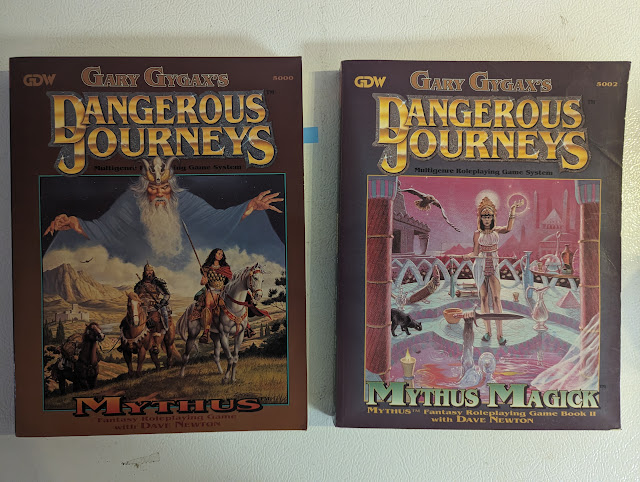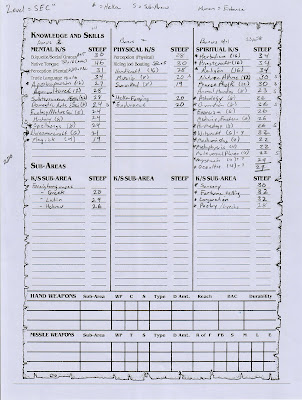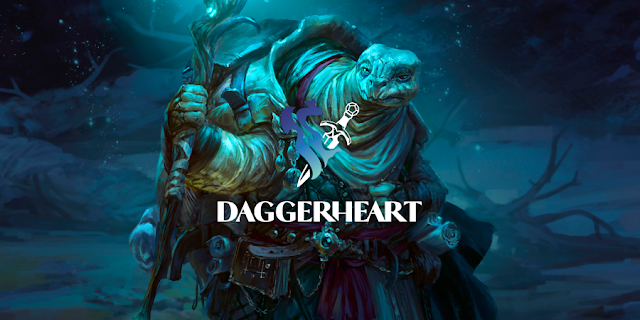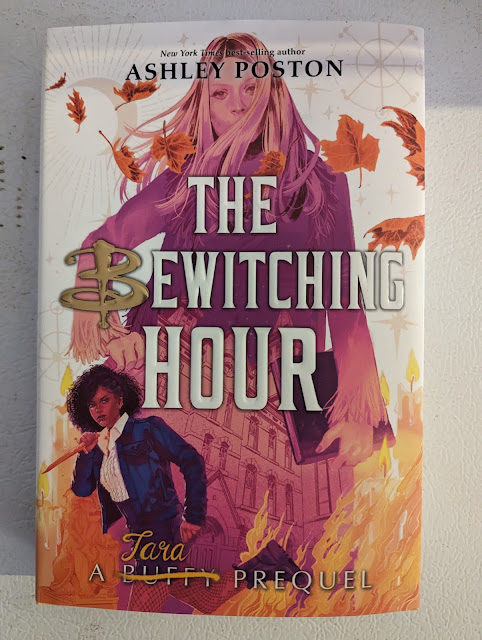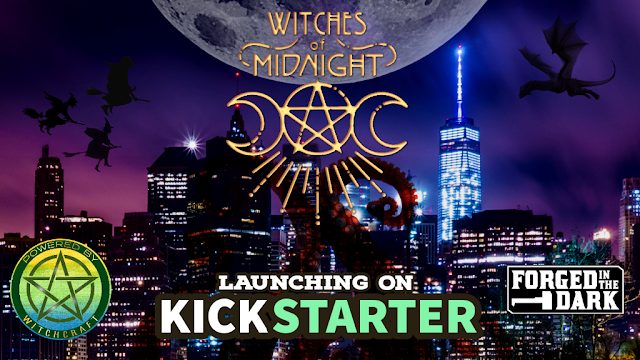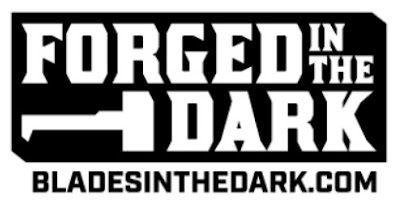This week is Gary Con, so I thought while I am celebrating 50 years of Dungeons & Dragons, I would also spend some time with Gary Gygax's other two games he made after leaving TSR, where he created D&D. This week, I am coving Dangerous Journeys: Mythus.
A bit of background for those not 100% up to speed. Back in 1985, D&D brought in a lot of money, but the publisher, TSR, was in debt of $1.5 million. These reasons have been explained better and in more detail elsewhere; suffice to say that by the time the dust settled (almost), Gary Gygax had been kicked out of the company (but not yet the industry) he helped create. He spent some time doing some novels with his New Infinity Productions where he also published his near-universally reviled Cyborg Commando. No, I am not going to review that one. Plus I don't own it.
After a little time away he returned to RPGs in 1992 with his new game, "Dangerous Dimensions," or DD for short. Well, TSR was not going to have any of that and threatened to sue (in fairness, it is from a playbook that Gary helped write), and his new game became Dangerous Journeys, and Mythus became the fantasy setting.
Dangerous Journeys would be his new core system with Mythus, the Fantasy RPG. There was a mention of the supernatural horror game Unhallowed, which would have been fun. Plus, I would have loved to have had a fantasy RPG and a supernatural horror RPG that used the same system.
Eventually, more pressure from TSR would kill Dangerous Journey, leaving only Mythus produced.
But what is Dangerous Journeys, and what is its setting, Mythus?
Gary Gygax's Dangerous Journeys (1992)
Gary Gygax with Dave Newton. 416 pages. Color covers. Black-and-white interior art. Some full-color art plates.
Published by Games Designer Workshop.
First some clarifications.
Dangerous Journeys is the system being used here. Mythus is the Fantasy RPG that uses the Dangerous Journeys system/rules. Mythus is also divided into Mythus Prime, which is a basic game and Mythus Advanced, which is the advanced or full game. This book covers both the Mythus Prime and Mythus Advanced games.
This game was designed to address some of the perceived shortcomings of AD&D, though Gary could not come right out and say that. He had to be a bit oblique about it. This book is huge and there is lot going on.
Welcome to the Mythus Game
This introduction introduces us to the game and some RPG ideas like what an RPG is, what a Gamemaster is, and so on. None of which I think are needed here to be honest, its a bit much. But the meat is the Game Premise and, in some ways, the most interesting to me. Mythus takes place on Ærth, a world like our own but 1000 years in the past, so at the time of publication, 992 CE. Here, the myths of old are real, and we know about them because of Ærth's connection to Earth. So elves, dragons, and vampires are stories here, but there they were/are real. The trouble I am having with Ærth as presented is there is very little to differentiate it from our Earth save for window dressing. This is disappointing really since I feel there is something here if given the chance to grow a little. The maps and hints throughout the book are tantalizing but not enough.
Here we are also introduced to the next two books in the line "The Epic of Ærth" and "Mythus Magic." Of those two, I only have the Mythus Magic book. We are also introduced to the concept of the Basic and Advanced games.
Your character in the game is a persona, or Heroic Persona, or HP. This game uses regular d6s and d10s for all the rolls. There are also d3 and d5 rolls here, but most will d%.
Mythus Prime Rules
Note: There is also a "Basic Set" sold separately as "Mythus Prime" that is a 144-page book. It is essentially the same as this section, with some expansions.
This is the "Basic" game designed to get people started in the Mythus game. It is like the Advanced Mythus game in many ways but obviously simpler. I am not going to delve too deep here. I have read it many times over the years and I like some of the ideas here. But I can talk about them when I cover the Advanced Rules. This does cover the next 45 pages or so. Reading the chapter Creating your Heroic Persona, though, is a good one since the Advanced Mythus points back to it for character creation. There is more in the advanced game.
HPs (remember, Heroic Personas) have three Traits: Mental, Physical, and Spiritual. It is not a bad division, really, Tri-Stat would later do it to much success. In this Basic section all the steps are outlined by an example. So choose SEC (Socio-Economic Class), Traits, Vocation (not a class...), choose K/S (Knowledge/Skills), and STEEP points (Study, Training, Education, Experience, Practice); get your finances and possessions., and round off your character. Compared to the flipping through pages, one has to do with AD&D 1st ed. This is an improvement, but compared to other games from around 1992, like, say, Vampire the Masquerade, it already felt dated. Still better than World of Synnibar, released the year before.
All characters get three K/S for free, Perception (Mental), Perception (Physical), and Riding/Boating.
There is a chapter on rolling and success. I go into that in detail with the advanced game. The same is true of the chapter after the next on Combat.
The third chapter is on Heka, or the force of Magic in the Mythus world. Now this was an interesting one to me. In the 90s I was dying for a new magic system. It is interesting but wildly crunchy. Heka is determined by your HP's magical K/S. Again, more on this in a bit.
Improving Skills & Abilities is after Combat, and the rules here as simple enough. you spend APs (accomplishment points, our XP stand-in) to improve. This one also gets more complicated in the Advanced Game.
A Chapter on Playing your HP, moving to the Advanced Game and some Gamemaster advice.
I like the idea of a simpler game to introduce the more complicated one, but I can't help but feel that the real game, the one that would been more successful, isn't somewhere in between. I mean we all did the same with Basic and Advanced D&D. Feels like the same mistakes are being made here for completely different reasons.
There is a brief adventure for the Basic game, High Time at the Winged Pig, at the end of this section. To be honest, it's not really all that interesting, especially given that this is the same guy who gave us B2 and the TGD series. I mean the HPs meet in a tavern. Fine for 1974-1977, but 1992? We deserve better than this really.
Advanced Mythus
Now 55 pages later, we are now in the Advanced Mythus game.
We are referred to the Basic Mythus game often, but the steps for character creation are pretty much the same.
1. Determine Socio-Economic Status. It may not be the best way to run a game since no one will go here first anyway. People choose a concept and/or a class first. This, though, does have effects on what your HP can and can't do. A table of the percent of the population of every SEC level is also presented. Not sure if it is here for illustrative purposes or if you are supposed to have your character population conform to it. I should point out though that frequency distribution for "rolled characters" will never match the SEC Populations table, no matter what you do. This is why I wonder why it is here. A lot depends on your HPs SEC. If the acronyms get to be too much, remember this is a Gygax game, and there will be a lot more. Now personally, I am not a fan of so much to be dependent on my HPs SEC (damnit now I am doing it), I mean I have my Taxes for that. I want to make kick-ass characters. Honestly, I'll just choose my vocation and then find an SEC that fits it.
2. Generate numbers for Traits/Categories/Attributes. We have the same traits as before, Mental, Physical, and Spiritual. These are divided into two categories each. Mnemonic/Reasoning (Mental), Muscular/Neural (Physical), Metaphysical/Psychic (Spiritual). Each of these six has three Attribute scores: Capacity, Power, and Speed. So a total of 3+6+18=27 numbers to describe your character, I mean HP. That seems a bit excessive. Granted, we only need to roll up 18 of those (OR assign 6 in the point spread) and the others are derived. These scores range from 6 to 20, with 8-11 as the average. The maximum of any human attribute is 30 for physical (cap, pow, or spd) and 40 for mental or spiritual (cap, pow, or spd). There are two ways to get these numbers. The first is a point distribution method. You get a range of numbers to divide among the 6 categories the split them up for the cap, pow and spd scores and then add them up for Mental, Physical and Spiritual. The second is a 2d6+8 rolled for all 18. Again, examples are utilized here which helps. These numbers are used to determine "Critical Levels," "Effect Levels," "Wound Levels," and "Recovery Levels." They will also be used to determine an HP's Heka.
3. Calculate STEEP for the HPs Knowledge/Skill areas. Players are encouraged to look over the vocations to see what areas they need to increase here. The same basic vocations are here, but a lot more are added. Now, vocations are not classes. Classes are picked in other games and then the skills are given. Here you start with the skills. While there are vocational packages that feel like classes, you could in theory ignore them and build a vocation of your own. There is an Appendix (E) here for that. STEEP scores are 00 to 91+ with 00 as "no knowledge" and 91+ as Ultra-genius. There is a K/S of "Witchcræft," and it is sadly presented as nothing but pure evil. Even Demonology here is not so vilified. Yes. I am taking this as a challenge.
4. Choose the HPs K/S sub-areas. This goes along with the various vocations. In the advanced game, there are three additional automatic skills, Etiquette/Social Graces, Native Tongue, and Trade Phoenician, which is the "Common" of Ærth.
5. Determine Personal information. This can be random or chosen.
6. Calculate the HPs Resources. This is random based on SEC. The unit of currency is the BUC or...Basic Unit of Currency. So 50' of rope costs 10 BUCs. I am not sure if this is clever or irritating.
This all covers about 70 pages. I glossed over a lot of it.
Core Game Systems
These are our core rules. Rolls are made with the K/S areas. The six difficulty levels all have a multiplier to the HPs STEEP. They are Easy (x3), Moderate (the default x2), Hard (x1 [one would think a x1 would be the better default]), Difficult (x0.5), Very Difficult (x0.25), and Extreme (x0.1). So if I want to read a scroll and my K/S in Dweomercræft is a 20 then if this were an Easy Challenge, then my chance to succeed is 20 x 3 or 60%. Moderate is 40% (20x2); if it is Very Difficult, then 20x0.25 or 5%, and 2% for Extreme. While so, a lot of the math is front-loaded on figuring out those K/S scores. These are roll-under abilities (roll under or equal). So, rolling 96% or above can be considered an automatic or even a special failure.
We get guidelines for combining efforts, for rolling a K/S vs another K/S and so on.
There is also something called a Joss Factor (JF) which work like luck or hero points. At least...I think they do. There is not much here about it at all. If there are rules about how to regain Joss (and WHY is it called that?? Oh, I found an "in game" reason that explains nothing.) I have not found them.
Spending APs is also covered for Traits and K/S areas. For this, advanced K/S descriptions are given.
Combat is largely an application of the appropriate K/S areas. Combat is done in units called Critical Turns (CTs) of about 3 seconds each. The initiative is a d10 roll. Armor reduces damage so HPs can take a lot of damage. Combat can target hit locations, given the names with damage multipliers of: Non-Vital (x1), Vital (x2), Super-Vital (x3), and Ultra-Vital (x4). This is to account for creatures that might have different sorts of vital parts. It feels weird, but given what this game was trying to do, I can see the utility here.
There is an insanity and madness mechanic, but as I have said before, I am never very fond of these.
Heka & Magic
Heka was the god of and the word for magic in ancient Egypt (or Ægypt in this book). Now I will freely admit, this is also one of my favorite sections. It is a wonderfully complicated system that would have made Isaac Bonewits proud. We get a few spells, but there are more in the Mythus Magic book (Thursday).
More on Personas
This covers anything that can change in an HP, like a change in SEC to becoming a vampire. This also covers some basic monsters. There are some examples of NPCs, or er...NHP? Oh, actually, they are OPs, or "Other Personas." The "monsters" are divided into three categories: Evil Personas (EPs), Monstrous Personages (MPGs), and Mundane Personas (MPs). Other than being descriptive, there is no real difference between these that I can tell, save for name/label. Maybe if they had different point spreads. There are also Friendly Personas (FP), which are what they sound like.
Magickal Items
Pretty much what is says on the tin. There isn't a lot of stuff here.
Condemned as Galley Slaves
An adventure for new HPs.
Appendices follow.
So. This game.
Let's be honest. It is not good. It's actually kind of embarrassing how bad it is. Not to say there are not good things in it.
There are a lot of things I do like about it, though. I love the idea of Ærth, and Necropolis is still a fun adventure. The Mythus Magic was also a lot of fun, and I am looking forward to going over it again on Thursday. That said, I love some of the fluff here and there are things I could use, but it is a lot od shifting wheat from chaff here.
Larina ferch Siân of ÆrthThe over-heavy-handedness of the "Witchcræft is pure evilTM!" and the inclusion of "wicca" vis-à-vis through the Wisewoman/Wiseman vocation (or Mystic, the book is not very clear on this) is just too tantalizing to pass up, even if character creation in this system has been universally reviled. I think I will try the character today and some spells on Thursday.
I did find some character sheets online, but I am going with the one in the back of the book. I considered doing the point spread, but I opted to roll up a new character instead. The numbers I got were a bit higher, but not very different from the point spread or the sample character. It also works out since I wanted a character similar to her AD&D stats.
I admit that rolling up the characteristics and getting my derived scores was much faster than I expected. But then I got to the K/S area, and things ground to a halt. It is not that it is hard, just tedious.
Note: For all the talk that this is a Class-less system, the Vocations are classes in all but name really.
So, our basic K/S skills are figured out as follows:
- Etiquette/Social Graces: SEC Level (6) x 5 = 30
- Native Tongue (Welsh/Keltic): 30 (above) + MMCap (16) = 46*
- Perception (Mental): 2d10 + MRCap (15) = 31**
- Perception (Physical) 2d10 + PNCap (12) = 28
- Trade Language: SEC (6) x 3 +MMCap (16) = 34
- Riding: SEC (6) x 5 = 30
* In some places it says SEC x5 for language others SEC x3.
** The formulas are reversed for these in the book.
Now, I have to pick my Vocational K/Ss. I picked Wisewoman for Larina since that fits well, but be sure I'll be bumping up her Witchcræft. Since this is a spiritual Vocation, I can choose which perception to use, so I chose Perception (Mental). I think I could figure out how to knock together a "White Witch" option per Appendix E, but instead, I am just going to tweak the Wisewoman a bit.
For this, I just shifted the same K/Ss around and kept the same number of STEEP points (248).
Crap. Forgot to adjust for age. Not going to do it. Say I rolled the appropriate number, and those above are the adjusted ones.
Attractiveness: Got a 16. Not bad. Should adjust for age or other factors I am sure, but not going too.
Joss: Rolled a 62, so 10 Joss factors.
Not rolling for birth rank, despite some fun things for a 7th child of a 7th child. This character is way established in my mind as the 1st born daughter.
She is from Cymru (Wales), and her birthplace was near Gŵry (Gower).
Quirks: A bit of roleplaying fun here. A lot like Qualities and Drawbacks in point-buy games. I'll choose two as long as they don't change any trait numbers (good or ill). I am not recalculating all of this. I'll take Psychic Awareness and Heka Channeler. For "Conter Quirks" I'll take Obsessive/Compulsive and Low Tolerance to Alcohol.
Connections: She gets two of these, so I am giving her access to the local Druid Hierarchy and an Apothecary; both of these are due to her parents.
Results below.
Larina ferch Siân of Ærth
Ok. That was fairly tedious, but in the end, I got a character that I think will be fun to use IF I ever play this game. I'll figure out her Heka and do spells on Thursday.
I need a mental break now.











